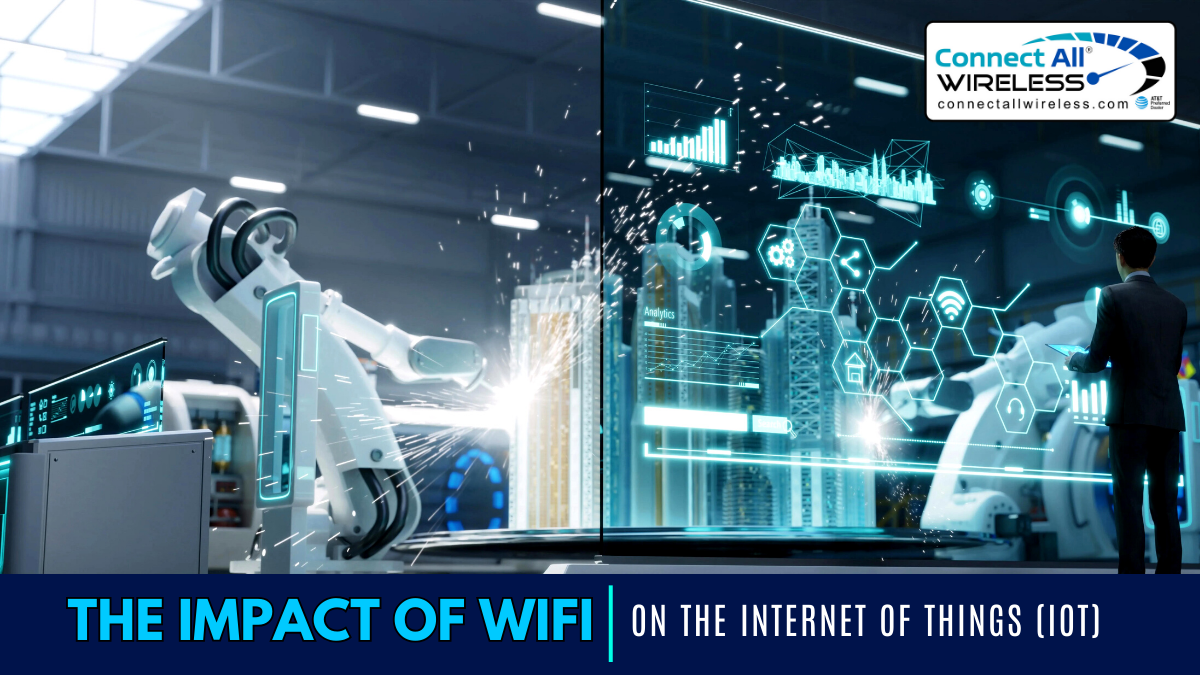
In the ever-evolving landscape of technology, the Internet of Things (IoT) has emerged as a transformative force, connecting devices and enabling seamless communication. Central to the success of IoT is the underlying connectivity infrastructure, with WiFi playing a pivotal role. This blog post explores the profound impact of WiFi on the Internet of Things, examining how this wireless technology has shaped the growth and potential of IoT applications.
The Rise of IoT:
The Internet of Things refers to the interconnected network of devices embedded with sensors, software, and other technologies, enabling them to exchange data and communicate with each other. This concept has gained immense traction across various industries, from smart homes and cities to healthcare and industrial applications. The proliferation of IoT devices has been facilitated by advancements in wireless communication technologies, with WiFi emerging as a preferred choice for connectivity.
Reliability and Ubiquity of WiFi:
One of the key reasons behind WiFi's dominance in the IoT landscape is its reliability and widespread availability. WiFi networks are prevalent in homes, offices, public spaces, and even industrial settings. This ubiquity allows IoT devices to seamlessly connect to existing infrastructure, fostering easy integration and accessibility for users. As a result, WiFi has become the de facto standard for connecting a myriad of IoT devices.
High Data Transfer Rates:
The success of IoT applications often hinges on the ability to transmit and receive large volumes of data in real-time. WiFi, with its high data transfer rates, provides the necessary bandwidth to support the demands of data-intensive IoT devices. Whether it's streaming high-definition video from security cameras, transmitting health data from wearable devices, or managing a smart home's automation, WiFi ensures a robust and efficient data exchange, enhancing the overall performance of IoT applications.
Scalability and Interoperability:
Another significant impact of WiFi on IoT is its scalability and interoperability. WiFi networks can easily accommodate a growing number of devices without compromising performance. This scalability is crucial for the expansion of IoT ecosystems, where the number of connected devices is expected to skyrocket in the coming years. Additionally, WiFi's standardized protocols promote interoperability, allowing diverse IoT devices from different manufacturers to communicate seamlessly on a shared network.
Security Considerations:
While the advantages of WiFi in IoT are apparent, security remains a critical consideration. As IoT devices become integral parts of our daily lives, the potential for security breaches and data vulnerabilities increases. WiFi networks, if not properly secured, can be susceptible to unauthorized access and cyber threats. It is imperative for IoT developers and users to implement robust security measures, including encryption and authentication protocols, to safeguard sensitive data and ensure the integrity of connected devices.
Challenges and Future Developments:
Despite the positive impact of WiFi on IoT, challenges persist. Power consumption, especially for battery-operated IoT devices, remains a concern. WiFi modules can consume significant power, affecting the longevity of battery life. Ongoing research and development efforts are focused on optimizing WiFi protocols to address this challenge and enhance energy efficiency in IoT applications.
Looking ahead, the integration of WiFi 6 and other emerging wireless technologies holds promise for further elevating the capabilities of IoT. These advancements aim to deliver higher data transfer rates, lower latency, and improved connectivity in densely populated IoT environments.
Conclusion:
In conclusion, the impact of WiFi on the Internet of Things (IoT) is profound and transformative, with the synergy between these two technologies driving innovation across various domains. As we delve into an era dominated by interconnected devices, WiFi, especially the cutting-edge WiFi technology , emerges as a cornerstone for seamless communication. The reliability, high data transfer rates, scalability, and interoperability of Michigan 5G WiFi have positioned it as a catalyst for the continued growth of IoT applications.
However, as we celebrate these advancements, it is crucial to remain vigilant about security concerns. Implementing robust security measures is imperative to ensure the integrity of data and the privacy of users. Looking forward, the dynamic partnership between 5G Wireless Technology and IoT holds great promise, promising to unlock new possibilities, enhance user experiences, and shape the future of connected ecosystems. As technology evolves, the collaboration between WiFi and IoT in Michigan, particularly with the advent of 5G, is poised to redefine the landscape of connectivity, pushing the boundaries of what is possible in the realm of smart, interconnected devices.

No comments yet